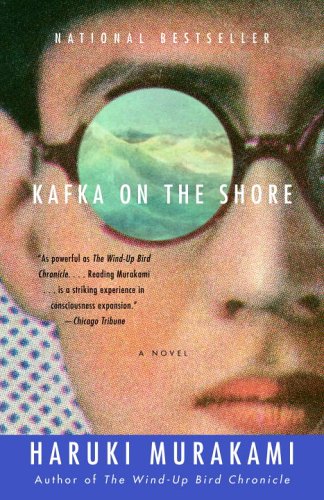Tuesday, February 23, 2010
Journal 5 : David Carson
Journal 5 : Stefan Sagmeister
I really enjoyed Sagmeisters lists especially the one about things that made him happy while designing:
1. Thinking about ideas and content freely- with deadlines far away
2. Working without interruption on a single project.
3. Using a wide variety of tools and techniques
4. Traveling to new places
5. Working on project that matter to me.
6. Having things come back from the printer done well.
Overall Sagmeister was just very concerned with happiness as a designer. Often in the design world its easy to get caught up in deadlines without remember that designing is something you truly enjoy, not just a job. I really liked the subway stickers that said things like "Do not accept defeat" and "Do not hold grudges". It was a very funny design.
In the article How Good is Good? Sagmeister made another interesting points:
1. Design can unify
2. Design can help us remember
3. Design can simplify our lives
4. Design can make someone feel better
5. Design can make the world a safer place
6. Design can help people rally behind a cause
7. Design can inform and teach
8. Design can raise money
9. Design can make us more tolerant
"Commercial Art makes you BUY things, graphic design GIVES you ideas" - Sagmeister
Journal 5 : J.J. Abrams
Friday, February 19, 2010
Monday, February 15, 2010
Journal 4: Bruce Mau
Growth is fueled by desire and innocence. Assess the answer, not the question. Imagine learning throughout your life at the rate of an infant.
Every collaborator who enters our orbit brings with him or her a world more strange and complex than any we could ever hope to imagine. By listening to the details and the subtlety of their needs, desires, or ambitions, we fold their world onto our own. Neither party will ever be the same.
Sunday, February 14, 2010
Saturday, February 13, 2010
Journal 3: 20 Rules
Wednesday, February 10, 2010
Wednesday, February 3, 2010
John Gall


Parts of this article I liked about John Gall
Gall: Different groups within the publishing company will each have different answers for this question. What an editor thinks is good, Sales might not. And as designers we have a different set of criteria, which must also include everyone else’s criteria. How that gets resolved is always a bit tricky. A really great cover is going to convey the essence of the book in a unique and surprising way that maybe pushes the design envelope a bit. It might even add to and enhance the editorial content of the book. A cover that is seen and respected by other designers is a good thing too, I guess, but the mission is really to allow the book to make a great first impression.
Whether people actually buy books because of the cover is open for debate. I mean, even I don’t know, though I’m usually checking the credit to see who is designing them.
SB: Each of your covers has a surprise. What I’ve noted in works by some other respected designers is that, in an attempt to create a well-constructed, prize-worthy creative jewel, the resulting design solution doesn’t surprise the viewer. Cover after cover, how do you find twists and turns and all those creative surprises that continue to jolt and engage the viewer?
Gall: Basically, I am always trying to surprise myself; and if I can do that, odds are others will perceive it as invigorating design. And I’m a big fan of the happy accident, and if I can contradict what I was saying about mass-market books, I will also approach a project from the viewpoint of what I shouldn’t do. Like I really shouldn’t put an airbrushed unicorn on a cover … but let’s see what it looks like.
Gall just like Chip Kidd has a way of making all his book covers innovative. Both men work for the Knopf Group.
Chip Kidd


Ripped straight from one of my favorite sites....WIKIPEDIA!
Q: What do you say to the axiom "Don't judge a book by its cover"?
A: My reaction is, Oh, go ahead.
Q: Does a typical idea come from the book itself, the author, something on the street, a flea market, a dream, or what?
A: It's totally everywhere. Absolutely. And the nice thing about books is the deadlines aren't as crazy as somewhere like a magazine or, God forbid, a newspaper. So, you have the luxury of time usually, to read a book and let it kind of like simmer and percolate in your head. And waiting for the right solution to come along, whether it's something you come up with on your own or a piece of art they you see in a gallery. I would definitely recommend anybody who wants to be a book jacket designer to move to New York City.
My own actual words (which are open for judgement):
Chip Kidd is important to us because there was once a question about him on Jeopardy. Ok thats not the only reason he is important but you have to admit it is a big deal. Book cover designs have significantly improved in the past couple of decades and Chip Kidd has been on the forefront of this development. His ideas are always fresh and and even as he has created thousands of book covers he is still able to create great ideas.





















